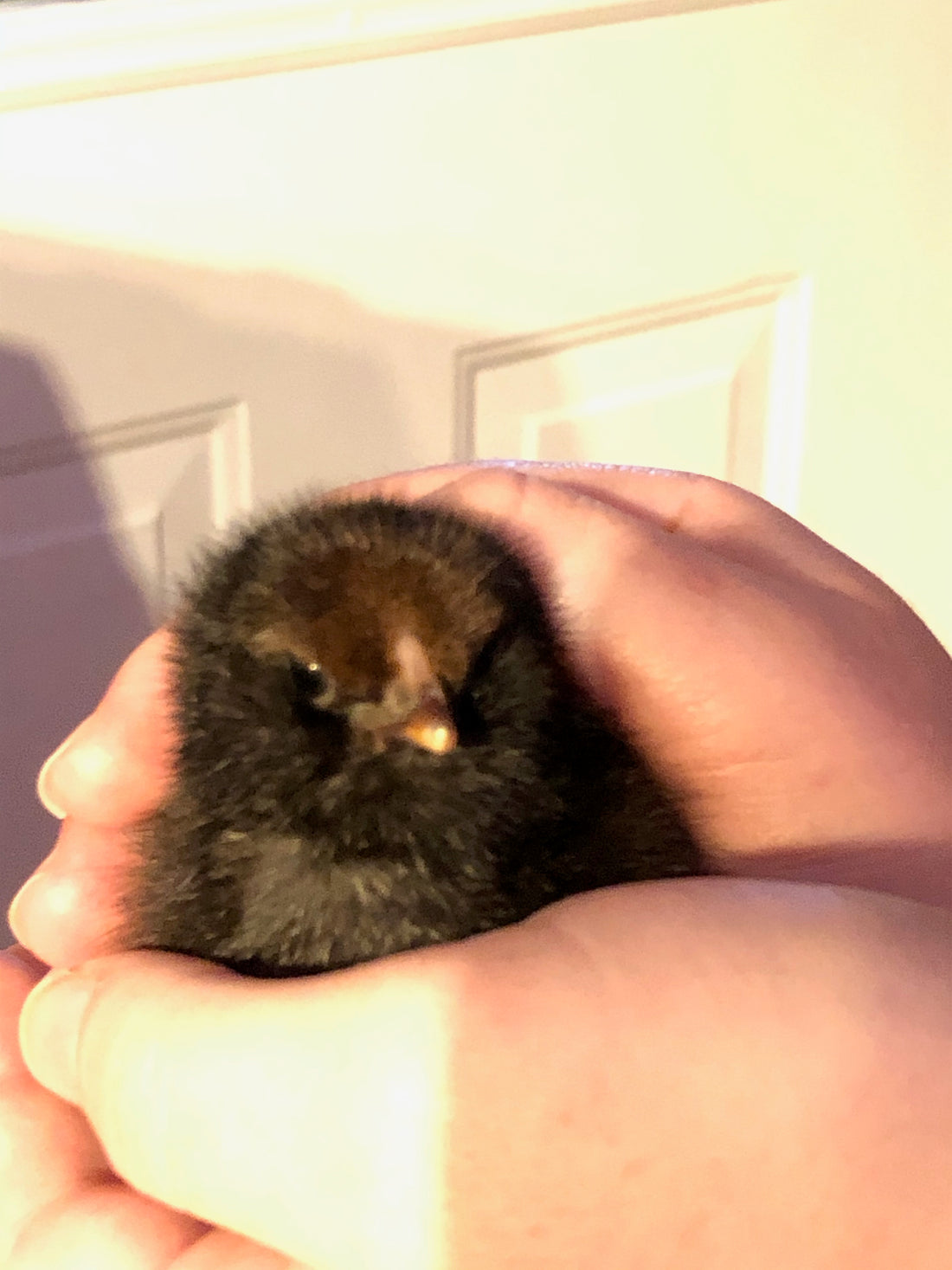A Message from Willow Bay Naturals
Congratulations on bringing home your baby chicks!

We thought we would give you some insight on the care we have taken to get your chick to this stage, and some tips on continuing with care for your chicks. We will be including a part two for care for your chicks once you get the home for the first 6 weeks.
First, we have ensured that our backyard chickens that are producing these eggs are free from diseases, illness, parasites, and mites. We do this by observation a few weeks leading up to egg collection, and during. The chickens are fed a locally sourced feed perfect for our organic homestead, and they also free range most of the day weather permitting, which helps with their daily nutrients. We collect the eggs only from pairs that have shown good qualities and temperament that would be desired in the next generation.

For example we have a hen that blesses us with huge eggs every other day, usually double-yolkers, and although we love these for our morning omelettes, she seems to struggle laying them, and the chicks have a hard time making it far in the incubator when we have tried, so they are for breakfast only.
When egg collecting begins, we aim to collect the eggs at least twice a day - knowing that most of our egg layers start in late morning. They eggs are examined for any cracks or excess debris, and then stored pointed side down so that the air sac (in rounded part) stays intact and in largest part of egg. They are stored in a cold storage room of approx 12-15 degrees celsius. We will continue to collect over the next 5-6 days. A couple of times a day the eggs are either rotated or tilted up on opposite side.
After 5-6 days of collection, we bring the eggs to room temperature over the course of a few hours, we inspect, number and record the identity of the egg,
The clean incubator is started and brought up to the proper temperature and eggs are then rested on their sides with the number facing up. 2-3 times a day for the next 18 days, we carefully rotate the eggs. This really becomes a family affair. Bonus - We have just invested in an automatic egg turner. I'm hoping this will improve hatch rate even more

Egg Candling: On day 5-7 we check for fertilization - You will se a small dark spot where fertilization has occurred, and will begin to see a "spiderweb" of veins beginning. Days 10-14 we monitor the growth, we will see the chick begin to take up more space in the egg, will see heart beating, may see eyes, the veins will be thicker and spread around the egg. We will record the air sac for proper size and location. Days 14-18 is the final check, where we will record growth, movement, air sac size and location, and final viablity. It is necessary to remove any non-viable eggs at this stage before lockdown. On this day (18) the lid will stay on, in theory until they are all hatched, to help keep humidity high enough for them to hatch properly.
On day 21, we set up our “Nest cameras” so that we can observe the hatching, process no matter where we are. The first chick to hatch can take up to 10 hrs to hatch after the first external pip. It can take a few days for all chicks to be hatched, but the whole process seems to be over before you know it
As tempting as it is, we only lift the lid of incubator once a day about 24 hrs from first hatch, just to remove shell debris, and any chicks that are dried of and wreaking havoc on newly hatching chicks. We don’t open incubator if any chicks have pipped, as the humidity will drastically drop and can shrink wrap the chick preventing it from hatching. Once the chicks are removed, they are given room temp water and beaks are gently dipped into waterer so they understand where their water is.
The brooder is already warmed up days before we move them and is nice and warm for them to relax and sleep. We lay shavings down and cover them with white paper towel for the first few days, this helps them visually find the food, prevents them from eating the wood shavings, and helps ensure the chicks feet do not slide on bottom of brooder.
Their droppings are cleaned up a few times each day, as well as giving fresh food and water. The chicks sex (if possible) will be recorded and families will be contacted for pick up within a couple of days to one week.
Read Part 2: Taking your fluff-balls home, How to care for chicks, Weeks 1-6
